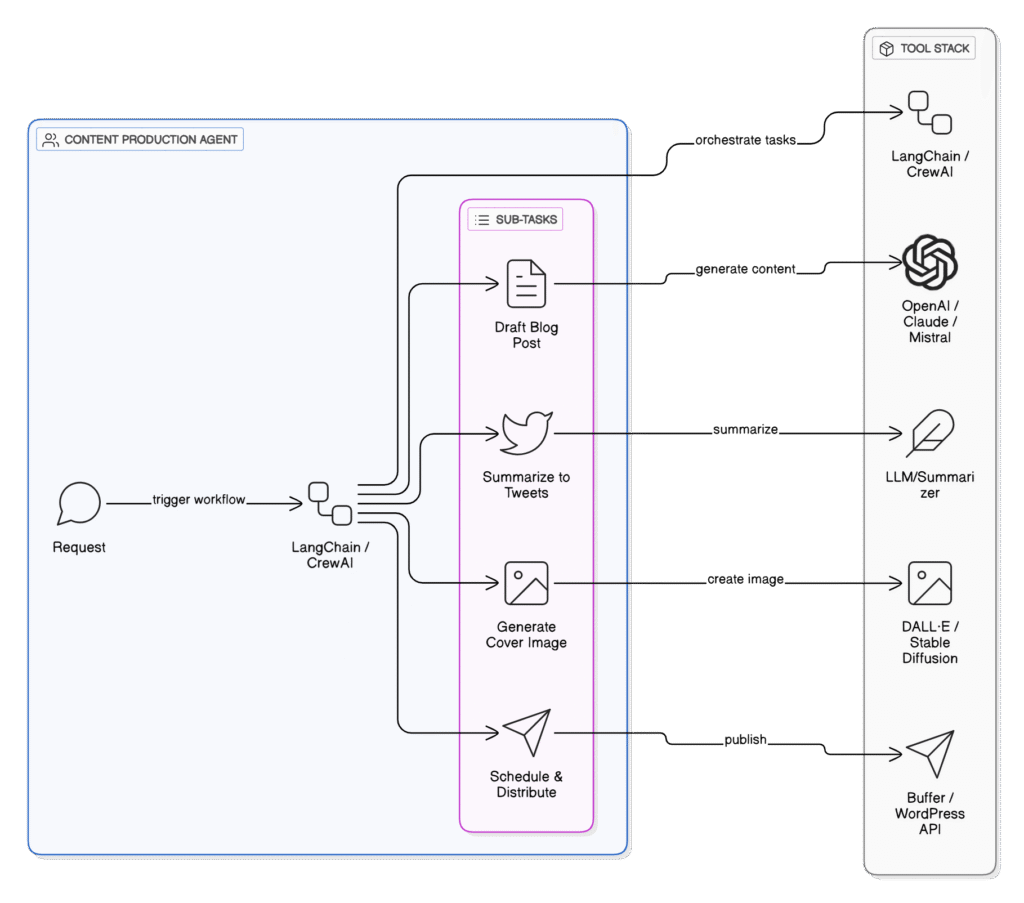Agentic AI marks a transformative shift in artificial intelligence—moving beyond static, prompt-driven models toward autonomous, goal-driven systems capable of planning, reasoning, and acting across complex tasks. Unlike traditional AI that simply responds to input, Agentic AI exhibits initiative, contextual awareness, and tool-using capabilities that allow it to operate with minimal human intervention.
From Reactive Tools to Autonomous Agents
Where traditional chatbots and assistants operate on scripted responses or intent-based commands, AI agents go several steps further. They can decompose high-level goals into subtasks, sequence workflows, interact with APIs or databases, and adapt dynamically based on feedback—bringing intelligence, memory, and autonomy into one unified framework.
Key Characteristics of Agentic AI:
- Autonomy: Agents act independently to fulfill goals.
- Task Execution: They perform real-world operations like API calls, file generation, or ERP updates.
- Multi-Step Reasoning: Agents reason through complex tasks, chaining multiple decisions over time.
Technology Foundations:
Agentic AI is powered by LLMs (e.g., GPT-4, Claude), orchestration frameworks (LangChain, LangGraph, CrewAI), vector memory stores (e.g., Pinecone), and automation platforms (e.g., n8n, Zapier). It leverages techniques like ReAct, CoT, and state machines to reason and adapt.
Use Cases Span Multiple Domains:
- Personal Agents: AI assistants that manage emails, calendars, and reminders.
- Business Process Agents: Automate workflows like invoice processing or onboarding.
- AI Orchestration Agents: Coordinate multiple models/tools to achieve creative or technical outcomes.
Comparison: Chatbots vs. Assistants vs. AI Agents
|
Capability |
Chatbots |
Virtual Assistants |
AI Agents |
|
Autonomy |
None |
Low |
High |
|
Tool Use |
None or minimal |
Some APIs |
Full API access + workflows |
|
Reasoning |
Rule-based |
Intent-based |
LLM-based multi-step logic |
|
Initiative |
No |
User-prompted |
Self-directed |
|
Memory |
None |
Short-term |
Long-term, persistent |
Real-World Examples Include:
- Research Assistants that summarize and cite academic content
- Customer Support Agents that resolve issues across CRM and KBs
- Travel Concierge Agents that build and adapt itineraries
- Marketing Orchestration Agents that generate and schedule cross-channel content
- Invoice Processors, Education Tutors, HR Screeners, and Finance Advisors that reduce manual effort and increase productivity
The Broader Implication:
Agentic AI signals the dawn of digital teammates—not just smart tools, but proactive, context-aware collaborators. As frameworks mature and safety mechanisms evolve, these agents will redefine how we interface with software, handle business operations, and scale human potential.
Example Use Case: Content Production Agent

- Receives
high-level request: “Generate a blog post about Agentic AI with
illustrations and social media snippets” - Sub-tasks:
- Draft
blog post (LLM like GPT-4) - Summarize
into tweets (summarizer) - Generate
cover image (DALL·E or Midjourney) - Schedule
post via social media API
Tool Stack:
- Orchestration:
LangChain / CrewAI - LLMs:
OpenAI / Claude / Mistral - Image:
DALL·E or Stable Diffusion
Distribution: Buffer API, WordPress API
Benefits:
- Achieves
complex creative tasks with minimal human intervention
- Ensures
consistency in tone, brand, and delivery
- Adapts
to different content formats and audiences
